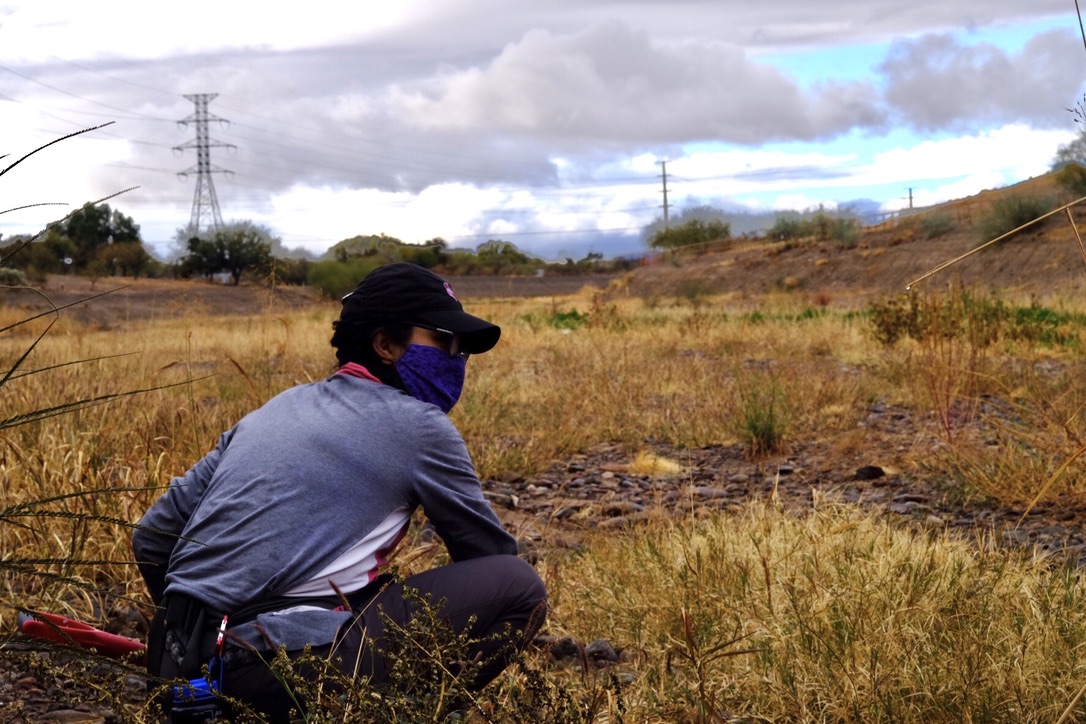News: Santa Cruz Reconciliation and an Anza Trail Champion

July 1, 2021
Hello! I’m Patrick Yoon and I’m the Community Volunteer Ambassador for the Anza Trail.
As the Community Volunteer Ambassador for the Juan Bautista de Anza Trail, my role is to strengthen and build partnerships along the Anza trail.
The Anza Trail has an active community that takes responsibility for maintaining both the heritage and natural history of its path. Angelantonio Enriquez Breault is one community member that took ownership of both these concepts. In southern Arizona, the Anza trail runs parallel along the Santa Cruz River. Read Angel’s story below about his efforts along this historic corridor. This is the first of many Anza Trail guest contributions to this new blog. If you have work or an Anza Trail champion you’d like to highlight, let me know!
———————————————————————————————————————
In 2019 the Santa Cruz River Heritage Project, an endeavor of Tucson Water, restored flow to a stretch of river at the heart of our urban community. The effort has demonstrated how simple actions renew life, even within our most degraded ecosystems. Miracles are possible – water is life. Unfortunately, rivers all across the Southwest face challenges that they did not a century ago. Violent anthropogenic changes to ancestral lands and the natural world have left the Santa Cruz incredibly vulnerable.

Reconciliation on the River is a community initiative that started in November 2020 as a personal practice of cleaning up the reach of the Santa Cruz River that runs between Mission Wash and Congress St. Bridge in downtown Tucson. The initial objective of the project was not stewardship, but connection – or rather a reconnection. The Santa Cruz river near the base of Chuk-son, black mountain – the name of Tucson, hosts some of the richest natural and cultural histories on the continent. If we hope to continue to sustain life and connection along our resurgent river we must reimagine how we engage with one another and the land that holds us. To this end, this project has three objectives;
Reconciliation – we use the term reconciliation due to the fact that the river will never return to its innate state of being. To this capacity the term restoration, is a fallacy. However, removing anthropogenic waste and invasive species can help us begin a process of returning to a healthy relationship with place. reconciliation. At this moment, our reconciliation efforts along the Santa Cruz include the removal of trash and invasive plant species from the river bed and surrounding tributaries. Unfortunately, because invasive species like tamarisk and buffelgrass colonize so rapidly, pulling them from the river bed is only a temporary “band-aid” solution. To implement more systemic healing, we have also remediate the river’s native seed bank using a native grass blend provided by Pima County.

Learning – Outreach and education about our shared ecological and cultural systems through storytelling and citizen science is integral for social change. Without context as to what was, how can our citizenry hold space and excitement for the aspirational change of what could be?
Justice – Addressing issues of equity and justice throughout our urban ecosystem and wild spaces is necessary to sustain life. Reconciliation is an intersectional practice. Issues of access to shelter and food directly impact those experiencing homelessness and poverty as much as they do the natural world. If we do not address issues of social justice with-in our community, we are only fighting half the battle. Regenerative work calls for holistic solutions.
 Regardless of where you are, the Reconciliation community believes the land and water that sustains us are canvases for connection. If you reside in the Southern Arizona Borderlands we encourage you to join us one Sunday morning. If you are not – we still invite you to renew your relationship with the waters and lands you call home and to the life that comprises your community. After all, all tributaries lead to the ocean – our work will one day connect no matter where we are or who we are with.
Regardless of where you are, the Reconciliation community believes the land and water that sustains us are canvases for connection. If you reside in the Southern Arizona Borderlands we encourage you to join us one Sunday morning. If you are not – we still invite you to renew your relationship with the waters and lands you call home and to the life that comprises your community. After all, all tributaries lead to the ocean – our work will one day connect no matter where we are or who we are with.


